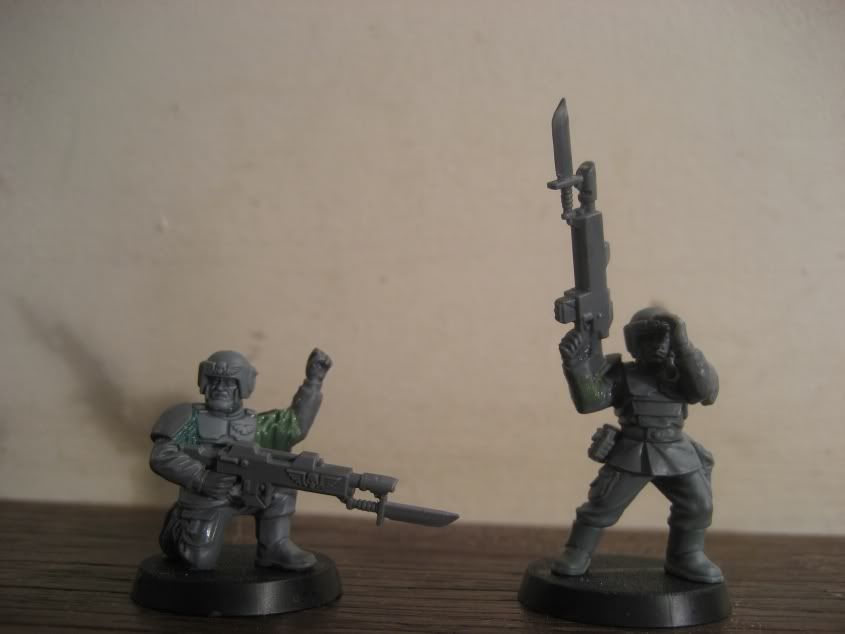Well this wasn't what I had planned to post next, but I've been pretty pleased with my results so far from my first Commissar for this army. I wanted to spend a bit more time on him than usual, as he will stand out from the rest of the army due to his distinctive black and red.
So far I've finished the flesh and the chest plate - the coat and rest of the clothes are still WIP. Completely lacking in originality, I decided to try and paint him up just like the GW version. The only change I made was to paint the gems purple instead of blue, to tie in with the purple plasma coils etc. that will come later.
If you read my post about painting faces using layering (I know there's one of you out there somewhere...) you'll recall the outcome of my previous attempts. Which is to say, not good. I thought I'd tackle it again, because like they say - "there's always the chance that you'll get better at painting faces. One day."
Well, perhaps they don't say that, but, damn it, it's a motto I live by!
Not brave enough to go it alone, however, I used the GW masterclass, published on their website, looking at the AoBR Space Marine Captain. Once I realised that their photo apparently bore very little resemblance to the colours in real life, I added a tiny bit of blue in the last couple of layers to give a pallid tone to the flesh. I probably should have done this with the bottom layers too, but I'm still happy with how it turned out. If I can remember correctly, the flesh went as follows:
1. Basecoat with 50:50 Dark Flesh and Tallarn Flesh.
2. Highlight with Tallarn Flesh.
3. Wash with Ogryn Flesh.
4. Highlight again with Tallarn Flesh.
5. Further highlight with 50:50 Tallarn Flesh and Dheneb Stone, plus a pinch of Regal Blue to taste. Not that I eat paint...
6. Final highlight of Dheneb Stone, with a little Regal Blue again. Again, only use a little bit - you don't want him looking like a Smurf.
7. The eyes were done my usual way - that is, paint a black line where the eyes are, fumble around for a while trying to put a couple of dots in the corners of the eyes and end up having to redo them about 5 times before I'm happy with them. Hopefully it becomes easier...
Anyway, here's the result: (Sorry the white balance is off. I tried to correct for it but couldn't manage it tonight).
1. Boltgun Metal basecoat.
2. Badab Black wash.
3. More Boltgun Metal on the central areas of the chestplate, leaving the recessed areas a bit darker.
4. Mithril Silver highlights for the edges and rivets.
5. The aquila and fern leaves were given a 50:50 Scorched Brown and Shining Silver basecoat.
6. Highlight with Shining Gold.
7. Wash with Gryphonne Sepia.
8. Highlight with 50:50 Shining Gold and Mithril Silver.
9. Extreme edge highlight with roughly 70:30 Mithril Silver and Shining Gold.
The gems were done using Liche Purple mixed with varying amounts of black and white to give some shading.
That's about it so far! In looking at other people's takes on this model on coolminiornot.com I was a bit depressed to see that their Commissars were much nicer than mine - I guess I've got to keep reminding myself that a lot of those models are done as display pieces!
I'm hoping to have the finished model up soon, so keep an eye out!
UPDATE: I've put some better photos up top, but kept the old one here for posterity...












